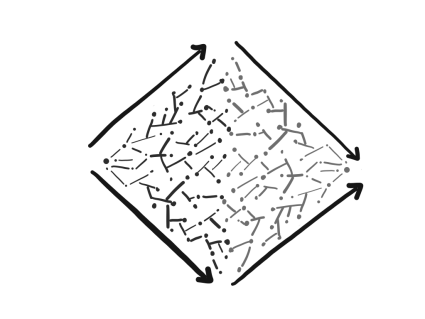Unlocking Creativity: How (and why) We Use Creative Problem Solving
- Inclusive Innovation

- Jan 5, 2024
- 4 min read
Some people seem to be effortlessly creative, churning out good ideas to tackle challenges in both their personal and professional lives. In contrast, others may find themselves too easily stuck without any inspiration. Why? Is it a matter of luck? Can creativity be learned?

Have you ever wondered about the secret sauce behind creativity? It doesn’t belong only to artists or geniuses; and creativity doesn’t have to be an accident or an inspirational touch.
You can be creative every day, and there is a structured process that you can learn and implement to harness your creativity.
In fact, much of Inclusive Innovation’s methodology is based on such a process; the Creative Problem Solving (CPS) process, a deliberate method to produce new ideas and novel results.
What is the CPS process?
The Creative Problem Solving process is a concrete method that was developed by a businessman and academic in the 1950s. It consists of a multi-step model based on the belief that creativity is notuniquely a Eureka experience, it’s a muscle that we can train.
How did it all begin?
Meet Alex Osborn, the ‘O’ in BBDO, a powerhouse among multinational advertising agencies in the last century. In the 1950’s curiosity led Osborn to dissect the minds of creative individuals and unravel the essence of their ingenuity, both individually and collaboratively. Teaming up with the academic Sidney Parnes, they codified CPS, providing it with structure and visuals. They founded an organization to train others in this transformative process, sparking conferences where individuals could immerse themselves in the art of creative problem-solving.
The 4 Steps of the Creative Process
Osborn and Parnes noticed a pattern whereby people tended to diverge to explore options and then converge to make selections—a dynamic cycle that unfolded throughout different stages of the creative journey. Over the years, their model has inspired many others and has been modified and modernized, but the four steps they identified — clarify, ideate, develop, and implement — still form the foundation of current creative processes.

Clarify
There’s a lot of value in exploring the problem space and gaining a greater understanding of the entire challenge, and all of its components. We try to articulate a number of potential problems (best stated as questions) that might contribute to the overall challenge. We test our assumptions; we look beyond the perceived challenge. If you dig deep enough, you usually come across something you hadn’t considered before, a new angle on the problem. After we’ve explored thoroughly the landscape of the problem, we focus on what might be the most intriguing or fruitful problems to address.
Ideate
In this phase, we suspend judgment (at least temporarily) and generate a number of ideas that might address the challenge. The more ideas you generate, the more you have to choose from. We have a number of techniques in our tool kit that help us to come up with a long list of interesting ideas. At this stage though, they are still just ideas with potential, not solutions. So we select the top ideas that seem interesting and novel and worth developing further.
Develop
During this part of the process, we take an intriguing idea and enhance it to improve its chances of success. This means highlighting the good points, looking at the potentials, and also making a list of its drawbacks or weak points, with an eye toward overcoming the problems rather than letting them keep the idea from becoming a full-bodied solution.
Implement
A good action plan has taken into consideration all the things that need to be done to ensure successful implementation; the people and resources that need to be harnessed to move from solution to reality. This means looking at what can help you move forward and capitalizing on it, anticipating what might stall your success, and being creative about overcoming those obstacles and challenges.
What happens when you are being creative?

Whenever you engage in a creative process, you inherently navigate through one or all of its components. Recognizing a problem, so you clarify and define it; generating ideas to address it; thinking about how to develop those ideas to enhance their impact; and finally, putting them into action.
This dynamic process can unfold within a minute, resolving a straightforward challenge such as deciding what to wear or choosing what to have for lunch.
It can extend over several hours, involving activities like a team meeting or a dedicated half-day focused on generating new ideas for a specific problem.
Or, it can take 3 to 5 days, like at one of our Impact Lab workshops, where we work with transdisciplinary participants to develop truly novel solutions to some of the world’s most wicked problems.
Some organizations might even spend months or even years applying this creative process to solving the most complex problems.
Who owns CPS?
Nobody. Osborn and Parnes chose not to trademark the process. They envisioned it as a gift to the world, making it open source. This decision aimed to infuse creativity into education, business, and healthcare without restrictions. That’s why there have been so many versions of the process, and so many refinements over the years. By making it available to the world, it’s been used and improved.
Evolution of CPS
The CPS it’s not the only creative process that exists. It was one of the earliest and has been studied and researched.
CPS serves as the core process that also launched methodologies like Design Thinking and Synectics. It is the most widely and deeply researched of all the creative processes and there is a growing body of knowledge and literature about how it works and how to use it more effectively.
How does Inclusive Innovation implement this CPS process?
We deliver actionable projects and initiatives that offer new, concrete solutions to address complex challenges, like those in the Sustainable Development Goals.
Our Innovations Labs and Collaborative Leader Labs are designed to help participants hack their challenges and find new ways to overcome seemingly insurmountable obstacles.
In embracing the Creative Problem Solving philosophy, Inclusive Innovation strives to be a catalyst for transformative change. Join us in unleashing creativity, fostering innovation, and making a lasting impact on the challenges of our time.




Comments